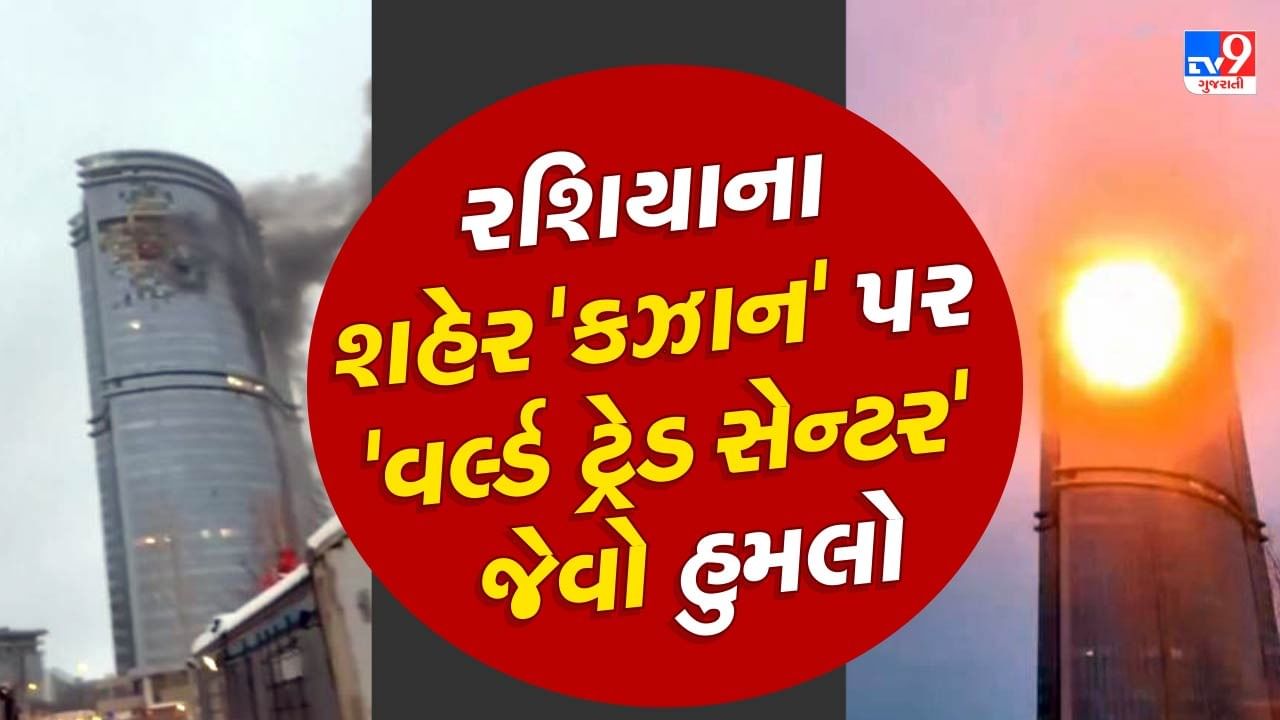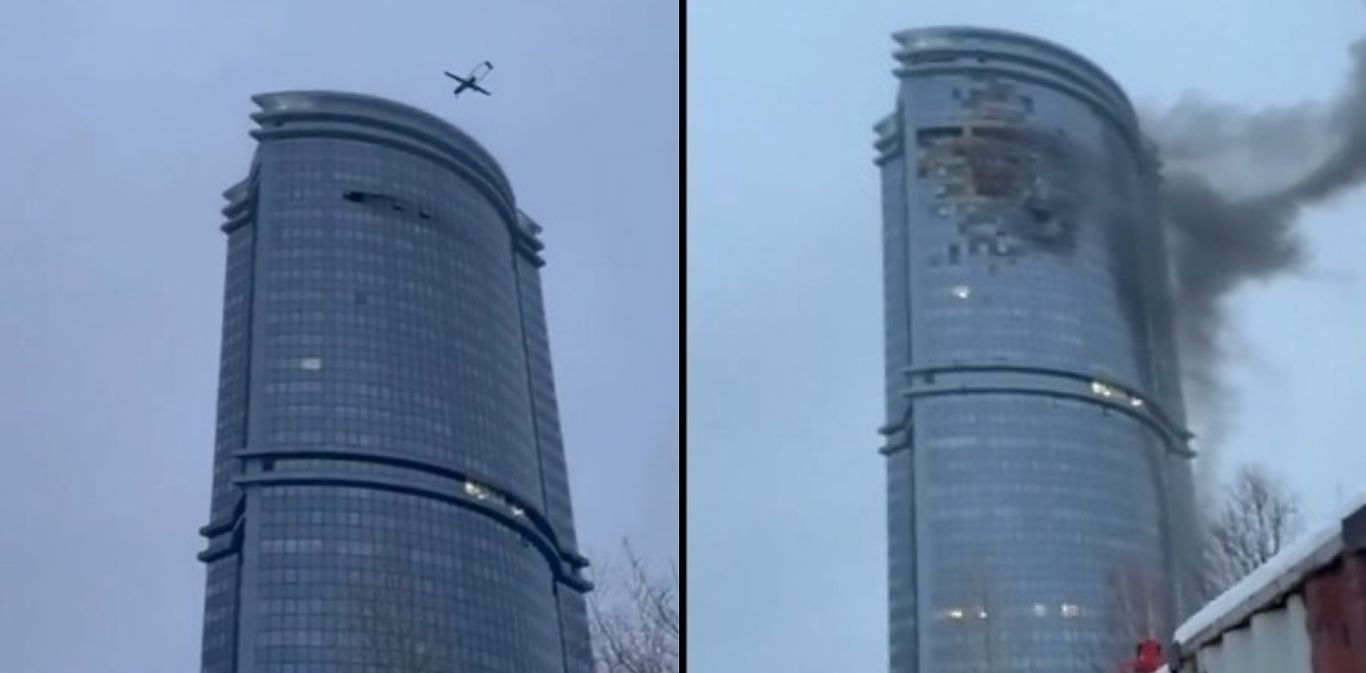Kazan drone attack: The recent incident in Kazan, involving the suspected use of drones, has raised significant concerns about the evolving nature of modern warfare and the vulnerability of civilian areas to aerial attacks. This event necessitates a thorough examination of the technological capabilities employed, the potential actors involved, and the geopolitical implications of such actions. Understanding the specifics of this attack is crucial for developing effective countermeasures and ensuring future safety.
The incident prompted immediate investigations into the type of drones used, their trajectory, and the potential motives behind the attack. Authorities are working to determine the extent of the damage, identify those responsible, and implement measures to prevent similar events from occurring. This analysis will delve into the technological aspects of the attack, the geopolitical context, and the implications for regional and international security.
The Kazan Drone Attack: An Analysis
Reports of a drone attack in Kazan, Russia, have raised significant concerns regarding national security and the evolving nature of asymmetric warfare. This analysis delves into the event, examining its technological aspects, potential attribution, geopolitical context, and implications for future security measures.
The Event: Kazan Drone Attack Overview
The reported drone attack in Kazan involved multiple unmanned aerial vehicles (UAVs) targeting unspecified infrastructure within the city. Initial reports emerged on [Insert Date and Time of Initial Reports], with varying accounts of the incident’s scale and impact circulating across social media and news outlets. While official statements regarding casualties and damage remain limited, early reports suggested [Insert Summary of Initial Damage Reports and Casualty Claims, if any].
Subsequent investigations and official pronouncements are needed to clarify the extent of the damage and any potential losses.
The recent drone attacks on Kazan highlight the increasing vulnerability of civilian infrastructure to aerial threats. Understanding the capabilities of such drones is crucial, and studying surveillance technology, such as the high-resolution imagery provided by a system like the cobequid pass camera , offers valuable insights into potential countermeasures. Analyzing these systems helps assess the technological advancements driving both the attacks and the defensive strategies needed to mitigate future incidents in Kazan and elsewhere.
Technological Aspects of the Attack
Determining the precise type of drones used requires further investigation, however, based on reported flight characteristics and potential payload capacity, several possibilities can be considered. The drones were likely relatively small and lightweight to evade detection, potentially utilizing commercial-off-the-shelf (COTS) components with modified capabilities. Navigation likely involved a combination of GPS and inertial navigation systems, possibly augmented by image recognition software for autonomous target acquisition.
Communication and control may have involved encrypted radio links or cellular networks, depending on the sophistication of the operation.
| Type | Estimated Range | Payload | Navigation System |
|---|---|---|---|
| Small Multirotor UAV | Up to 50 km (estimated) | Small explosive device or incendiary payload | GPS/INS, potentially with image recognition |
| Fixed-Wing UAV | Up to 100 km (estimated) | Larger explosive device or multiple smaller payloads | GPS/INS, possibly with pre-programmed waypoints |
Attribution and Responsibility
Attributing responsibility for the Kazan drone attack requires careful consideration of several potential actors. Several groups, both domestic and international, possess the technological capabilities and potential motives to carry out such an operation. These include [List Potential Actors, e.g., Dissident groups, foreign intelligence agencies, or other potential groups with motive and capability]. The lack of immediate claims of responsibility and the limited information available currently hinder definitive attribution.
Further investigation is needed to analyze any available evidence linking specific groups to the incident.
Geopolitical Context

The attack occurs within a complex geopolitical environment characterized by [Describe relevant geopolitical tensions, e.g., ongoing conflicts, international sanctions, or domestic political instability]. These tensions create a climate where such attacks could be perceived as a means of expressing dissent, destabilizing the region, or achieving other strategic objectives. The incident’s proximity to [Mention relevant geographical locations or infrastructure] further highlights the strategic importance of the location and potential implications for regional stability.
The recent drone attack on Kazan highlights the escalating use of unmanned aerial vehicles in conflict. Incidents like this raise concerns about civilian safety and the potential for misuse, prompting comparisons to other drone-related mishaps, such as the florida drone accident , which underscores the importance of robust safety regulations and operator training. Ultimately, the Kazan incident serves as a stark reminder of the evolving challenges posed by drone technology.
Response and Aftermath
Following the reported attack, authorities initiated [Describe the official response, e.g., investigations, increased security measures, and public statements]. The investigation aims to determine the perpetrators, the precise nature of the attack, and the extent of the damage. Measures to enhance security and prevent similar incidents, including increased drone detection and counter-drone capabilities, are likely to be implemented.
The effectiveness of these measures will depend on their technological sophistication, integration with existing security infrastructure, and the adaptability of potential adversaries.
Impact and Analysis of Security Measures, Kazan drone attack
The incident underscores the need for a comprehensive reassessment of existing security measures designed to counter drone threats. Current protocols appear to have been insufficient in preventing this attack, highlighting gaps in detection, interception, and response capabilities. Strengthening these measures is crucial.
- Enhance drone detection capabilities through the deployment of advanced radar systems, acoustic sensors, and optical detection technologies.
- Develop and deploy more effective counter-drone technologies, including jamming systems, directed energy weapons, and net-based interception systems.
- Implement stricter regulations and licensing requirements for drone operation, particularly in sensitive areas.
- Invest in advanced cybersecurity measures to prevent unauthorized access and control of drones.
- Enhance intelligence gathering and analysis capabilities to identify and track potential threats.
Visual Representation of the Event

Imagine a night-time scene in Kazan. Several small, dark drones, possibly quadcopters, are depicted silently ascending from an undisclosed location on the outskirts of the city. Their flight path is erratic, utilizing a combination of pre-programmed waypoints and real-time adjustments based on environmental factors. The drones converge on a target location, potentially a government building or critical infrastructure.
Upon reaching their destination, a small explosion or brief fire is visible, indicating the release of a small payload. The drones then rapidly disperse, disappearing into the night.
Counter-Drone Technologies

Various counter-drone technologies exist, each with its own strengths and limitations. These include radar systems for detection, radio frequency jamming to disrupt control signals, net-based systems for physical capture, and directed energy weapons for neutralization. In the Kazan incident, a combination of these technologies could have been employed to detect and intercept the incoming drones. For example, radar systems could have detected the drones’ approach, while jamming systems could have disrupted their communication and control links, potentially preventing the release of any payload.
The effectiveness of these technologies would depend on factors such as the drones’ sophistication, the range and power of the countermeasures, and the responsiveness of the security personnel.
The Kazan drone attack serves as a stark reminder of the increasing sophistication and accessibility of drone technology, highlighting the urgent need for enhanced security measures and international cooperation to prevent future incidents. The investigation into this event will undoubtedly shape future counter-drone strategies and underscore the critical importance of understanding the evolving threats posed by unmanned aerial systems in the modern geopolitical landscape.
Further analysis is required to fully grasp the long-term consequences of this incident.
Detailed FAQs
What type of damage was reported after the Kazan drone attack?
Reports vary, but initial accounts suggest damage to property, though the precise extent and nature of the damage remain under investigation.
The recent drone attack on Kazan highlights the escalating concerns surrounding unauthorized drone activity. Incidents like the one in Kazan underscore the need for robust drone regulations, a point further emphasized by considering the consequences of other incidents, such as the florida drone accident , which demonstrated the potential for significant damage and disruption. Ultimately, effective countermeasures are crucial to prevent future attacks like the one in Kazan and similar events elsewhere.
Were there any casualties reported?
Information regarding casualties is currently limited and subject to official confirmation. Investigations are ongoing.
What is the current status of the investigation?
Authorities are actively investigating, but details are limited to protect the integrity of the process. Public updates are expected as information becomes available.
